
Firstly, I apologise for leaving the last update on a cliffhanger. It really wasn’t fair of me.
However, the reason for breaking the chronology of the story was because I wanted to not only present a direct before and after for the work that Regal had done on the RS4’s 4.2-litre V8, but I also wanted to use this opportunity to talk a bit about dynos.

It’s a common occurrence on Speedhunters that, whenever we talk about power figures, the comments section blows up with disagreements about what figures we should present. It’s a somewhat confusing topic too. For a start, there are various units of measurement which, although when converted do end up reasonably close to each other, are actually slightly different. Straight off the bat we have horsepower (HP) and brake horsepower (BHP), terms you’ll all be familiar with. For all intents and purposes these two measurements are the same – a clever Scottish bloke named James Watt (after which the watt was named) decided that a horse could produce 33,000 foot-pounds of force per minute and this became the standard by which we measure power across much of the world today. Nice one Scotland.
Although, to further confuse matters we then have PS (pferdestärke), a metric conversion of horsepower often used in Germany (it literally translates to horsepower), and kilowatts (kW), which is popular in backwards and largely uninhabitable places, like Australia. I joke; strictly speaking kilowatts is a valid metric measurement of power, but when 1bhp=0.7457kW and your 500bhp monster is now just a 373kW machine, you can see why everyone else prefers horsepower. The conversion for pferdestärke is 1PS=0.986bhp, so it’s roughly the same.
And no, I don’t know how to say pferdestärke out loud.

When measuring an engine’s power we have two ways of doing so – an engine dyno and a chassis dyno. Now, the most accurate way of measuring power is an engine dyno – here, torque is measured directly from the engine’s crankshaft and converted into horsepower. This is the way that a vehicle or engine manufacturer would measure engine power. The downside of this method is that because engine dynos measure power from the crank, they require the engine to be out of the car when tested, which is not practical for most aftermarket tuners.

Option two, and the more popular method of measuring engine power is using a chassis dyno. These measure power one of two ways – either using drums underneath the vehicle’s wheels, and take a reading directly from the wheels, or by bolting directly to the hubs. This power reading in itself isn’t specifically engine power, as the vehicle’s drivetrain plays a factor in the output. The figure produced is known as wheel horsepower (WHP).

There are several different makes and models of chassis dyno, which often have shared characteristics. For example, certain brands of dyno are known to read generously, where others under-read or are more realistic. Generous dynos are great for impressing your mates, but not useful if you’re actually interested in facts over fairytales.
Specifically, Regal Autosport uses a Mustang MD-500 AWD setup. This is a mechanically-linked, strain-gauge type, dynamic load cell dyno that measures power by applying a variable load on the primary mover (in this case the drums), and measures the vehicle’s ability to move this.

The mechanically-linked part is important, because it means that it can be unlinked for 2WD testing. Many other AWD dynos are not mechanically linked, which can cause costly issues with cars that use a non-permanent clutch-actuated AWD system, such as like VW/Audi’s Haldex, Porsche Carrera 4/Turbo AWD and the Audi R8 or Lamborghini Gallardo and Huracán. In these instances, if the wheel speeds aren’t the same front-to-rear the clutch unit tries to compensate, dramatically increasing wear and reducing lifespan. This is why you’ll sometimes see AWD cars on dynos with the prop shaft removed so that only the rear wheels are powered. This avoids clutch problems, but I don’t need to explain why it results in inaccurate power figures. What’s more, some modern 2WD cars can be fussy about delivering full power/torque if all four wheels aren’t spinning, and a mechanically linked AWD dyno overcomes this.
Back to power figures… Much of the confusion arises in our comments section because of our international reach. For our US readers, you’ll be used to quoting power figures in WHP, as this is what is directly measured during a chassis dyno pull, however here in the UK and some of Europe, we still quote figures in BHP, even when using chassis dynos. Why? Well, it’s a cultural thing, but I guess it’s because we can then make direct comparisons to what the engine produced as stock, when measured by the manufacturer on an engine dyno. Converting measured WHP into BHP is usually done by estimating drivetrain losses in terms of percentage and then applying this figure to the WHP readout to give an approximate BHP figure. This is all well and good, and gives you a close idea of what power output the vehicle is capable of, but it’s obviously not 100% accurate.
Here’s the clever part about Regal’s Mustang dyno – unhappy with this approximation of power, Regal approached TAT Messsysteme in Germany to develop a dyno software that would more accurately convert WHP into BHP. TAT develops dyno software for some of the world’s biggest race teams, and created a very clever system that delivers the most accurate results possible short of using an engine dyno.
Rather than assigning a uniform loss percentage to the drivetrain, which would obviously differ from vehicle to vehicle based on any number of factors, the TAT software measures run-down drag after each pull, taking into account factors such as parasitic losses of the dyno, the vehicle’s powertrain, and data from the built-in weather station, for example. What’s more, this measurement of acceleration is accurate up 0.0000002 seconds: two tenths of a millionth of a second. This data is applied through “quick maths,” to quote Big Shaq, to bring us to a highly accurate conversation to bhp.

So, how about Project RS4? I’d previously had the actuated flap and vacuum system removed from the airbox and a BMC panel filter installed, but the engine was otherwise stock. There was also no record of a carbon clean being done prior to me picking the car up, so with just over 80,000 miles on the clock I was expecting it to be well below the stock power figure of 414bhp.
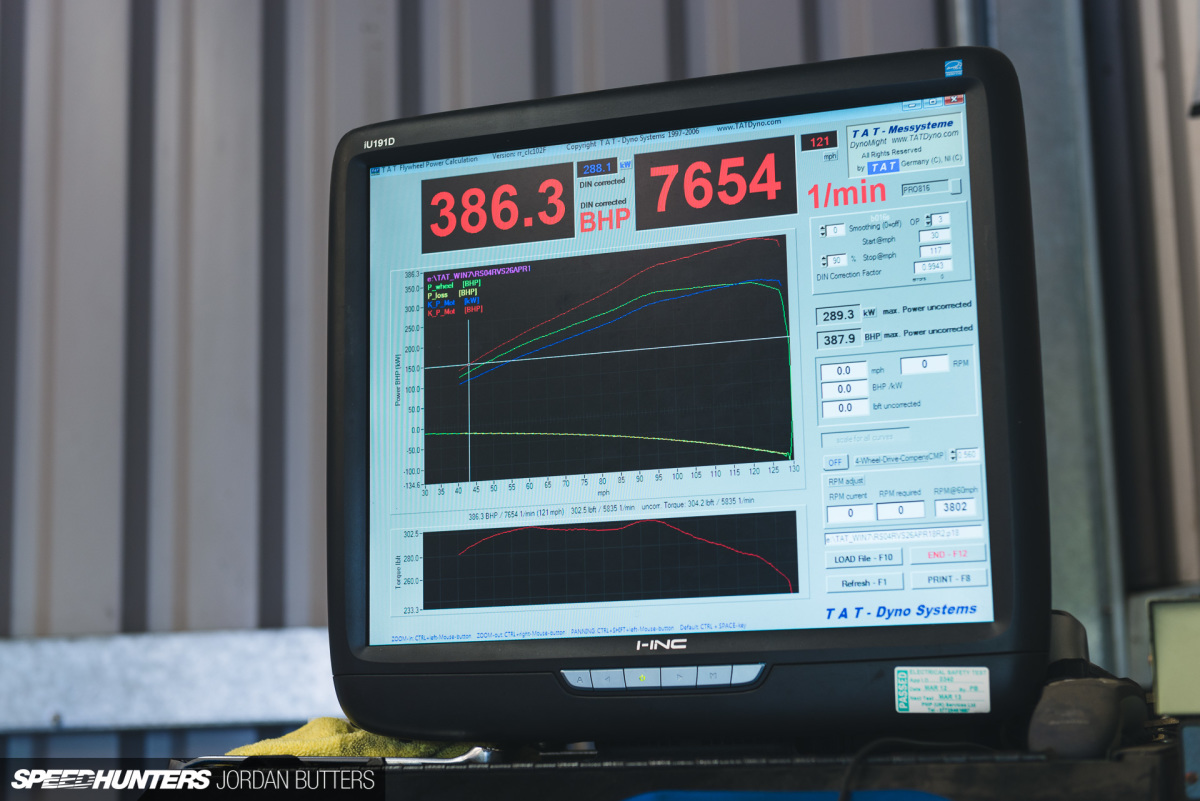
I was pleasantly surprised though; the ‘before’ runs delivered an average of 385bhp at 7,700rpm and a steady 300lb/ft from 3,500rpm through to around 6,000rpm. That’s a pretty healthy figure given the amount of coked-on carbon that we later found.

Work completed, and onto the ‘after’ run – I’d be lying if I said I wasn’t apprehensive. Heck, any time you’re standing alongside your car when its being wrung up to 8,000+rpm after engine work your wallet is bound to start twitching. With these engines being highly tuned from the factory, I wasn’t expecting a big leap from removing the intake manifold flaps and mapping, however I was intrigued to see exactly what clearing out all that crappy carbon would do.

The results: 419bhp at 7,900rpm and peak torque of 321lb/ft at 5,800rpm. On a dyno that reads comparatively conservative to others I’m incredibly happy!

Here’s a chart plotting the before and after runs. The solid lines are the ‘after’ run and the dotted lines, ‘before’. Red is BHP, post conversion, and teal is torque, measured as lb/ft.
The results pretty much mirror what I expected would happen with the carbon removed and the manifold vanes removed – a loss of around 4-5lb/ft up to 4,250rpm (1.5%), but then a hike of 28lb/ft (around 9%) right through to redline. Peak power is up 34bhp too. It’s hard to say what can be attributed to the de-vaning and what can be assigned to the de-coking, however I’d guess that the vanes seem to help airflow at low RPM, but then become restrictive (coupled with the carbon) at higher RPMs.

It’s easy to get tied up in dyno figures but here’s the caveat to all of this information – it doesn’t really matter on the road. Dyno runs are a very specific test of one vehicle under varying test conditions. There are so many variables that can alter the results, from the make and model of dyno to the software, the operator, the weather, the tyres, the oil in the drivetrain and so forth. Comparing figures from two dynos is akin to comparing apples and… koala bears; they both hang from trees, but after that the two are irrelevant alongside each other. That’s why it’s important that, if you need to know what exacting difference changes make to performance, both before and after runs should be done on the same dyno in as similar conditions as possible.
When it comes down to it, and past this comparative information, dyno results are pub talk (or forum talk if you’re not participating in the outdoor world). What really counts is how your car delivers that power on the road. I’ve had a couple of weeks to put some miles on Project RS4 and I’m pretty stoked with the results. Aside from the extra oomph, where the power used to falter and drop off at the top end it now feels relentless – I’m definitely finding myself at the rev limiter more often than I used to!
With a slight adjustment in driving style the power is more usable too. Whereas previously I was working the V8 in a somewhat lazy manner from low down, now I find myself downshifting before accelerating, knowing that from 4,500rpm onwards it’ll just keep going.

So, engine in a good place, I’m now looking at where we go from here. The car needs some exterior and interior TLC in the next month or so to prepare it for summer, and there are a couple of maintenance bits that I need to do too. After that it’s on to more exciting stuff – maybe an exhaust – and I think I might have decided on a set of wheels at long last…
Jordan Butters
Instagram: jordanbutters
jordan@speedhunters.com


























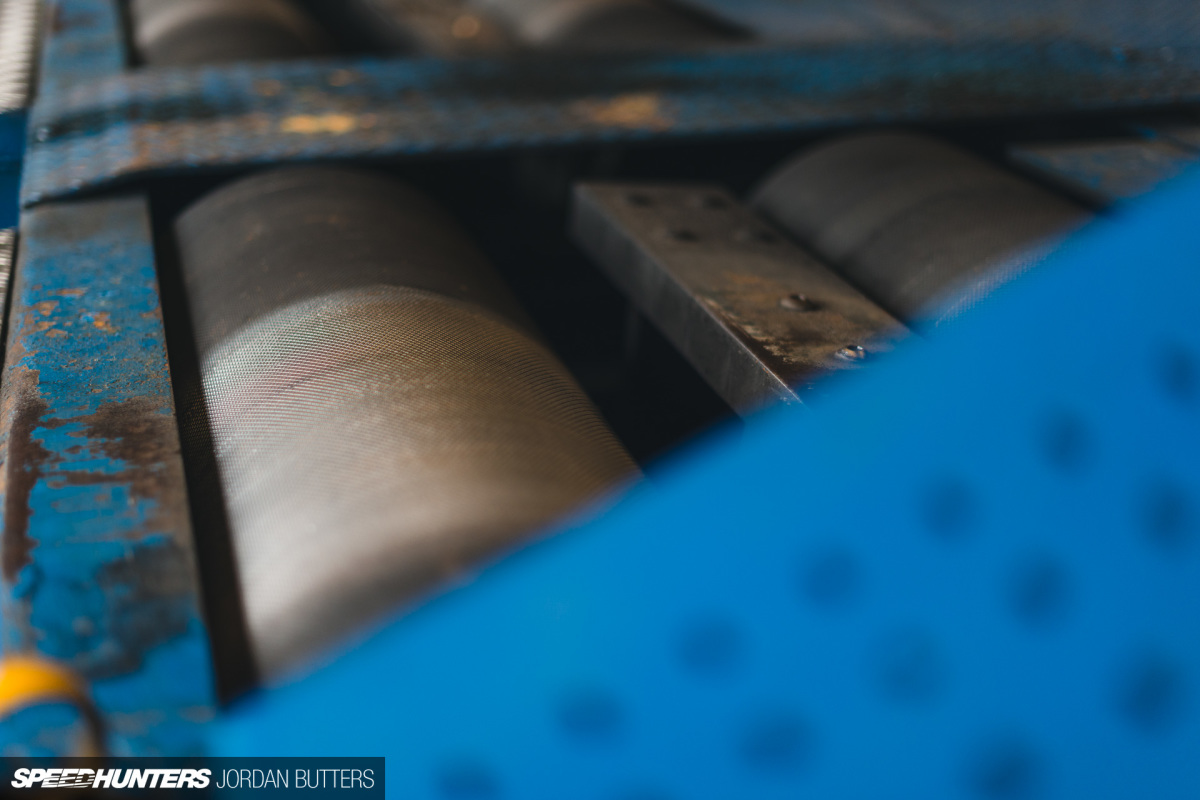
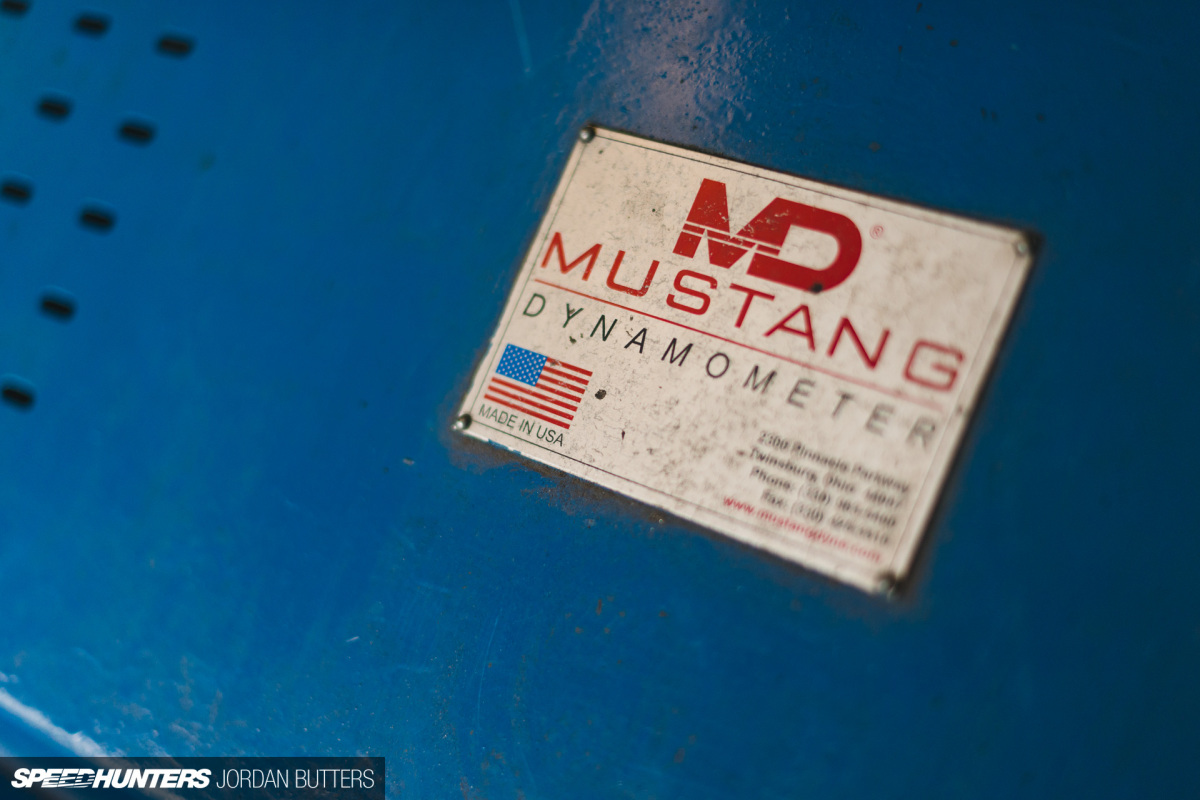
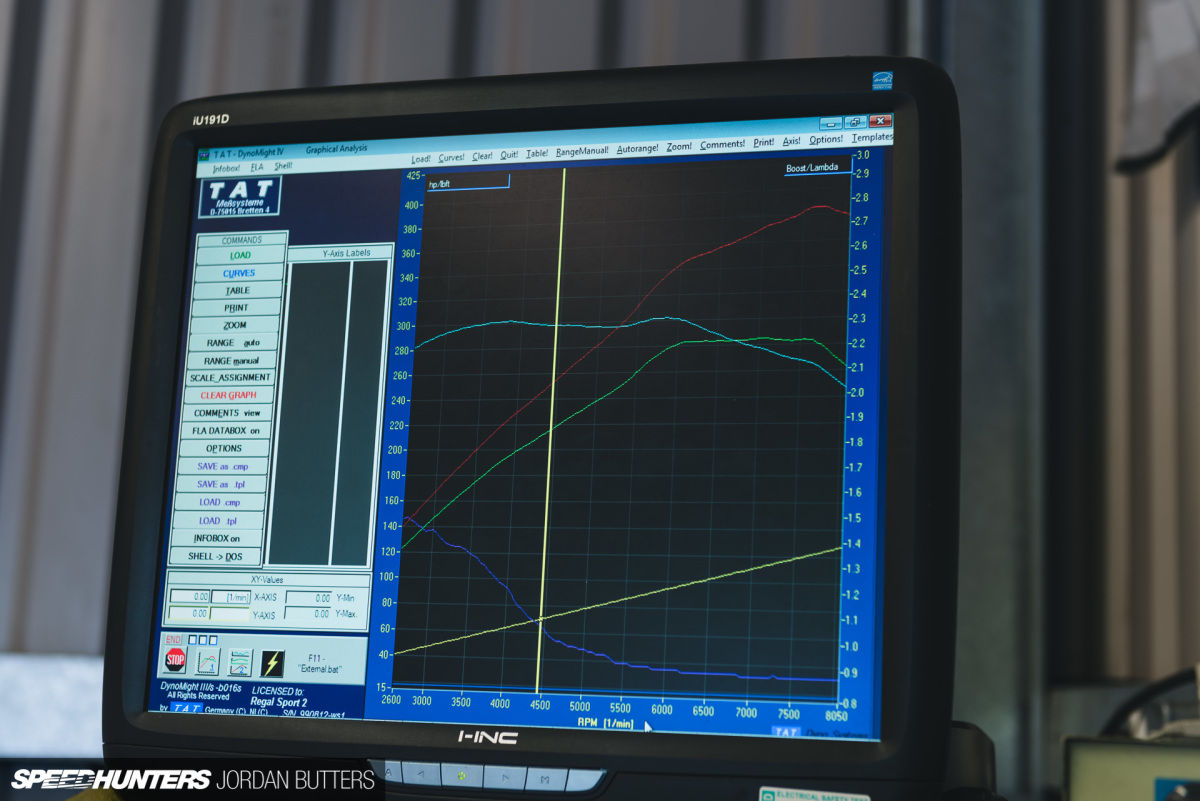

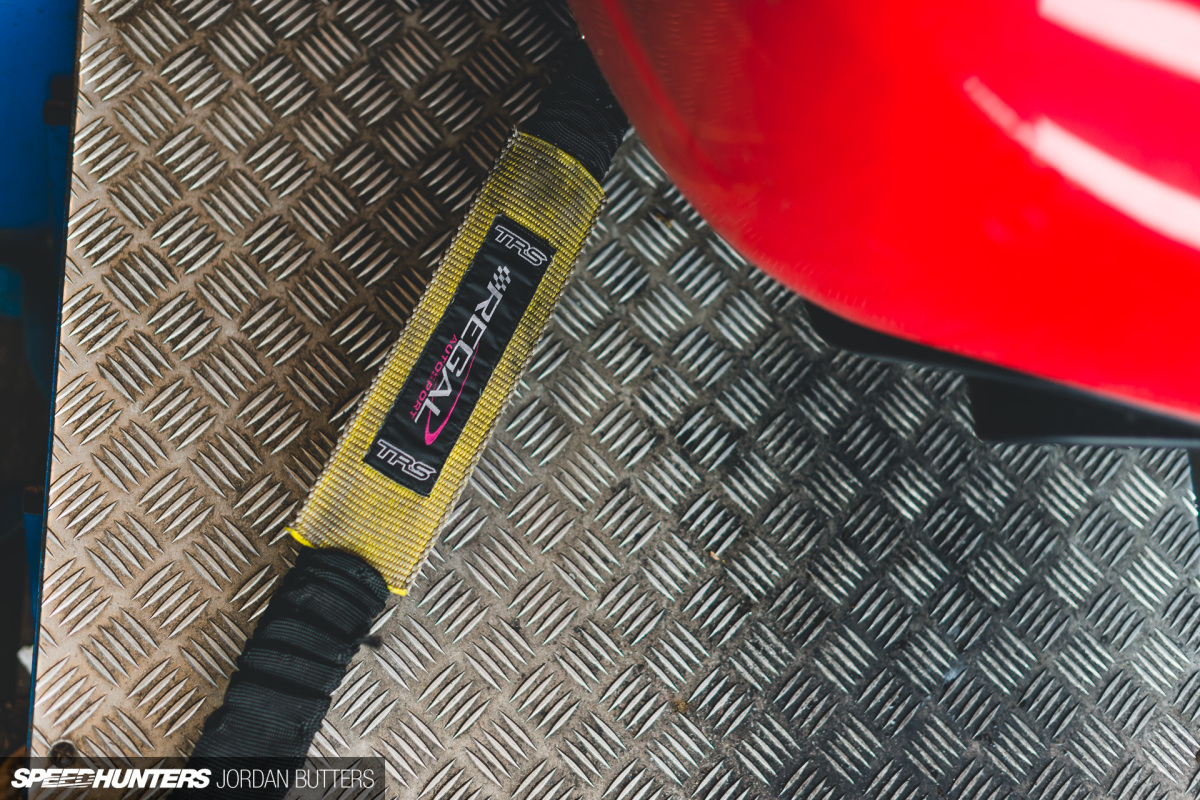
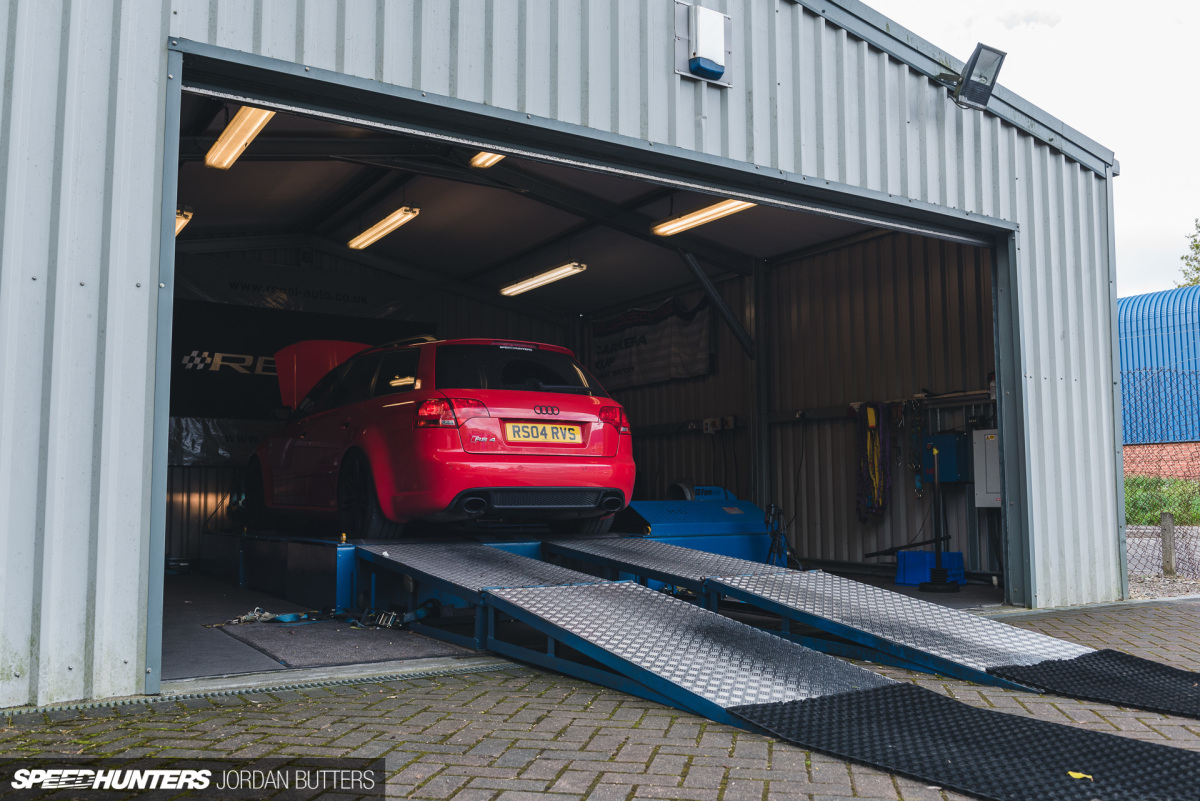
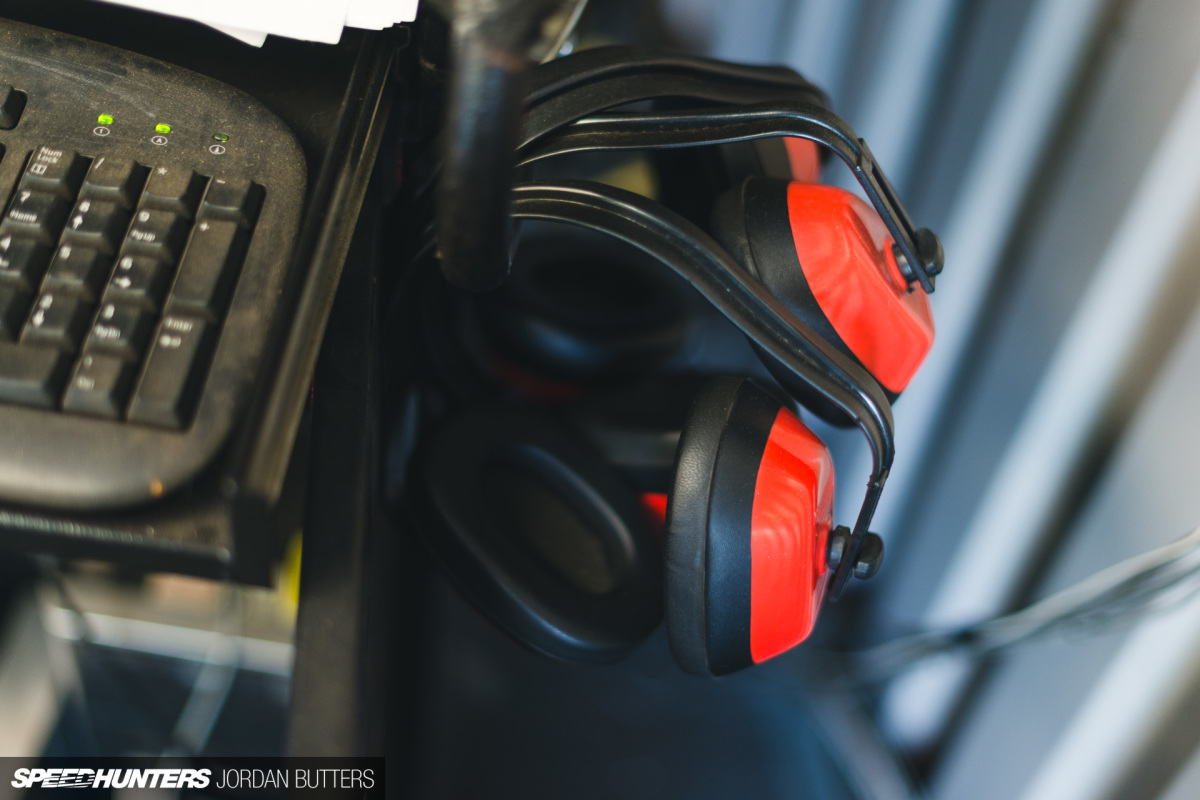
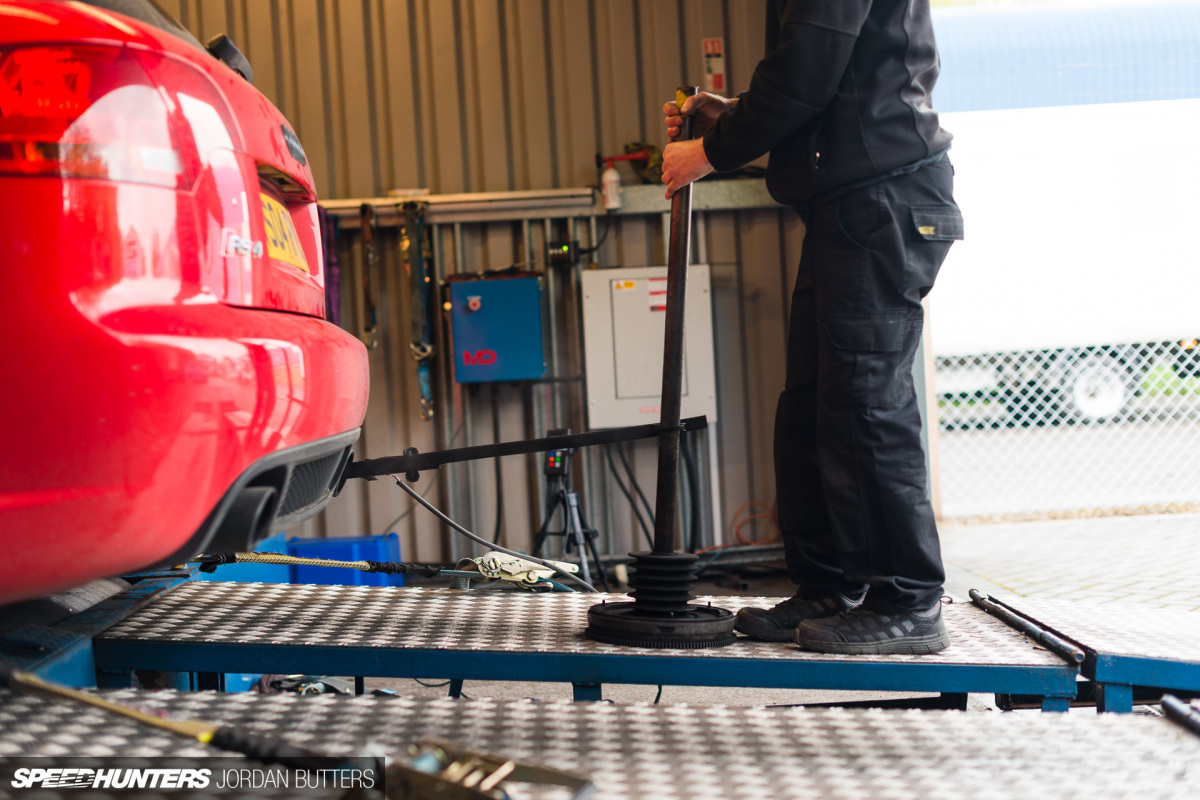
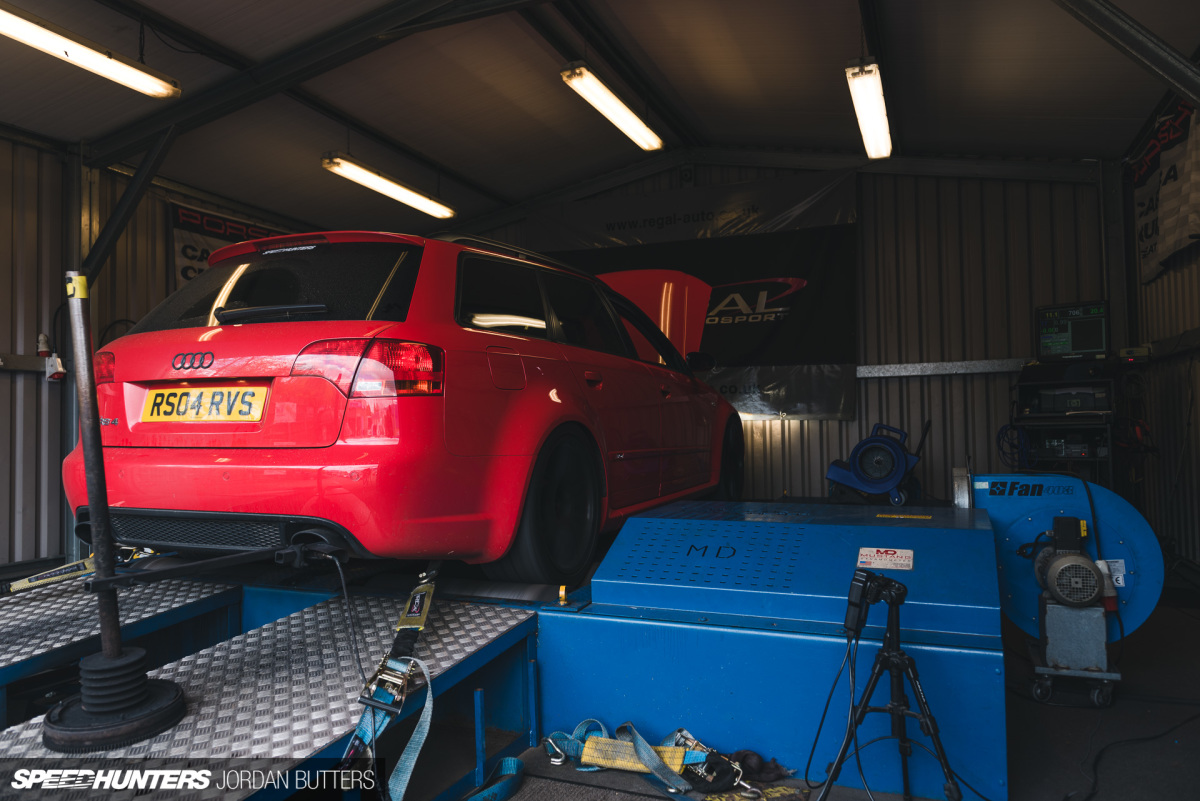
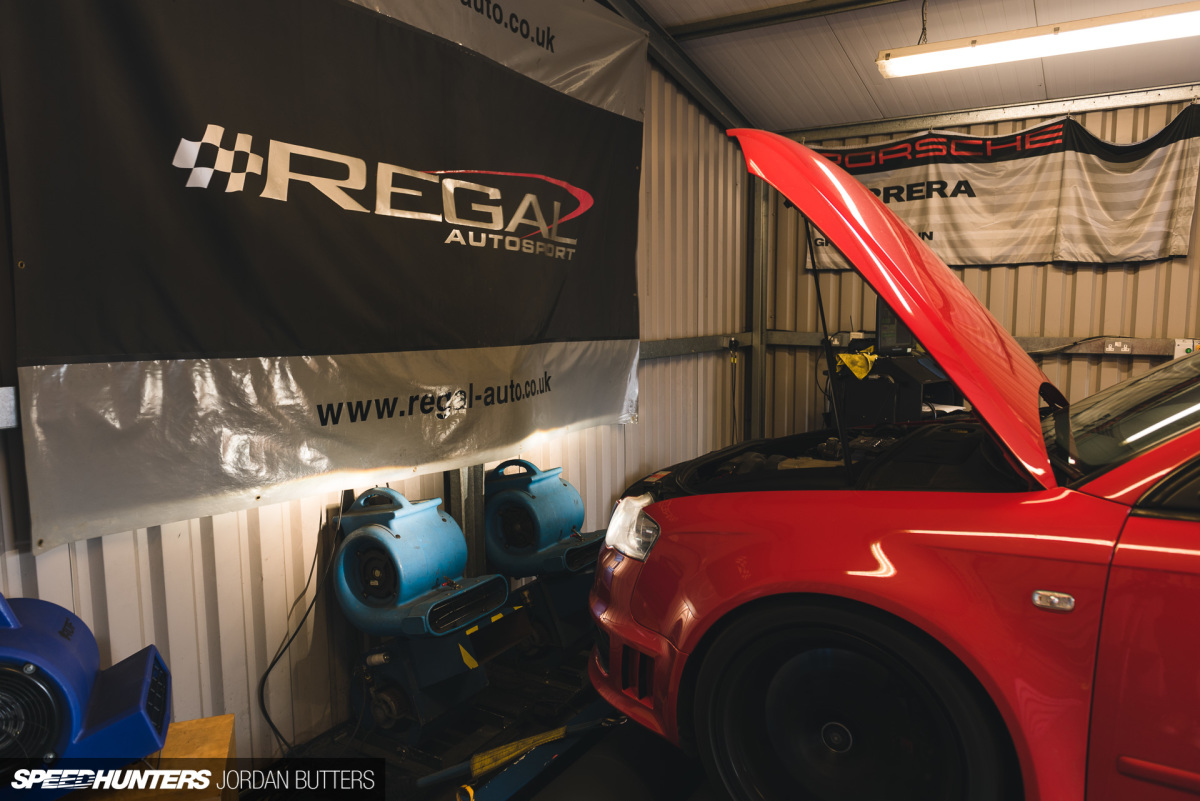





I swear to God every dyno room has that same windows keyboard. Literally every shop I worked for when I was younger.
Audi.
Beautiful engines, shitty mass distribution and only reliable in Europe.
Every single time your RS4 appears in a new article on here, i take a look trough the window.... Color, check. Wheelcolor. Check! Engine? Diesel ....
This car (Yours obviously!) is so right. In evey single detail. Keep this one!
Every single time a new arcticle about your RS4 appears i have to take a look through the window. Colour? Check. Wheelcolour? Check! Engine.. well Diesel.
Keep on the cracking work, thais car is near perfect in all the details.
It's all about the red wagon gang!
Nice Avant, this days, with the prices of fuel, makes sense to drive a diesel powered car. Your car must be quite happy, looks like is getting quite spoiled ! Is more enjoyable to see an older car sparkling and having a good life, speaks for the owner’s treatment, keep it up !
Awesome car!
An intermediate dyno run prior to the ECU re-map would have been nice to see the benefits of both the carbon cleanup and the ECU tune.
Agreed. Sadly we ran short on time to do this. Although I'm not sure if there's some sort of limp mode that could have kicked in as the engine would have thrown a fault code because of the inlet flaps we removed.
Thank you for your article, very instructive. The RS4 is my dream car, always liked the spice up station wagons, seeing yours is always delightful. Congratulations on your nice ride, pretty sure your car is happy too, getting back that all missing power. Looking forward to see your next article on your RS4 !
Thanks Jorge!
speedhunters does one thing. teach me things the other hypemags dont.
<3
Glad you found it useful!
I can't remember where i heard the tale but an engine will lose around 1% HPs yearly and your pre-cleaning numbers are somewhere near that maybe the tale is true.
Wish everyone can read this article and stop arguing about which car is faster from their dyno runs (and each using his own dyno not even same one).
I'd not heard that statistic before, but I'd be surprised if it's true for every engine. The RS4 V8 is especially prone to power loss. Think of the poor AE86-heads with their now-84hp engines :D.
Yeah, it's a tale that i don't even remember how it's originally reached my mind. Maybe the god of engines has mercy for small engines? Just forget about it, too much tales; rare/none are true.
"Koala Bears".... come on now. Surely we're past that after this terrible song;
https://www.youtube.com/watch?v=fB2y52jfRdc
Well I never. Today I learnt about Koalas.
You need to install a catch can on your wagon to help keep the intake clean as well.
As Paddy said – it's been tested with negligible results on this particular engine. It might contribute a minor amount to the build up, but it's believed that the majority is caused by the engine's internal EGR system. The intake valves open before the exhaust valves close – not only does this handle EGR, but it also uses the scavenging effect of the exhaust to draw air into the cylinders, and means that the intake valves are open for longer. The downside, is the carbon.
One of the only things that I've heard to help on this motor is methanol/water injection into the intake, as this helps to cleanse the valves and inlet tract.
From reading Jordan's comments recently, a catch-can doesn't help with carbon build up on the RS4 due to an internal EGR system. He might explain it better.
Well Jordan, let's not also forget Ferrari's favourite unit to measure power output: CV. LOL!
Of course – it's the same measurement as PS, but just translated into Italian (cavallo vapore). The conversion is the same - 0.986bhp for every one metric horsepower.
Amazing RS4! Any chance to share with us what such carbon clean-up costs for this particular engine?
From memory, it was around £700. If you contact Regal direct they should be able to advise for your own car.
419 is actually the Promotional (from 2006) Data. Spot on!
Great results! I wonder if there's anything that could be done to the intake valves or surrounding area, short of chrome-plating, to resist the carbon build-up?
My shop does carbon cleaning. We have dynoed from rs4, rs5 and r8 about 10% power loss. We also check the injectors with Asnu and clean them. Everytime at least 1 of the injector is either leaking or is short of fuel delivery, so we have to put a new one(s). You should definetly do injector check also. After that, Milltek catback for your own taste is a must. My own sc'd avant makes noise with non-res one.